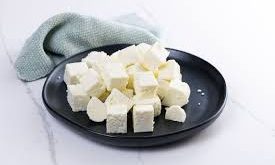Tips on Evaluating your Craft Beer
A chilled beer is your best companion whether you are at the beach or wish to relax on a sunny day. With an exquisite variety of drinks, the world of Beer is beyond just bitterness and fizz. Each beer has its own unique taste, and as you take the time to learn about what you drink, you are sure to fall in love with various beer flavors and discover what you like. There is a world of food connoisseurs and sommeliers, and there is also a “Beer Cicerone”. Evaluating beer is an art and like a full sensory exercise.
Beer Lovers have been hopping around taprooms to get the best quality beer. You have tried different kinds of beer, but let your sensory organs get to know your beer better and wholesome.
No matter if you are a beginner, enthusiast, or buddy brewer, here are some tips for evaluating your craft beer.
- Appearance – Before your first sip, observe the color, clarity, and consistency of your beer. One may notice a few things –thick and creamy head, bubbles in the head large or small, dispersal of bubbles happen quickly or they last, the colour of your beer dark or light, its texture clear or hazy. We all have seen a range of beers from a light, pale-golden, a rich amber, or a dark brown, almost black color. Such as a cold-filtered, medium-bodied beer will be light in colour. Avoid checking the look of your beer in bright light.
2. Aroma You can’t forget the aroma of your last beer pint and perhaps, that is the reason that beer lovers find most of the flavour in the smell. The bubbles in the head and the body of a beer all carry the particles that give the beer its aroma, so swirl your beer glass gently to burst them, and sniff. There are several elements that contribute to a beer’s aroma. For the aromas like sweetness, caramel, chocolate, roasted biscuit, all thanks to the malt. The smell of the beer is an indication of the taste of your beer. It is important to know that the aroma changes with time and temperature, so be quick in evaluating the fragrance of the beer before it makes a switch.
3. Palate – You only need about a tablespoon of beer per sip when evaluating it for taste. Your beer should contact all parts of your tongue and the palate of your mouth and then swallow to finish the sensory inspection. Breathe out while tasting the beer, as it releases retained stimulations at a warmer temperature, allowing you to perceive more complexity. Commonly, taste buds can only pick up five flavours: sweet, sour, salty, bitter, and savoury. Experts speak of sweetness is perceived mostly at the front of the tongue and that saltiness is vice-versa. Your mouth feels the sensation after swallowing the beer. The aftertaste of some beers lingers for minutes; others vanish almost instantly.
4. Impression – Identify the textual impression that your beer gives in your mouth, it feels light-bodied or full-bodied? Finely carbonated beers with their small bubbles tend to give you a creamy mouthfeel. The body of the beer refers to the weight or thickness of a beer. The key attributes recognized in the perception of mouthfeel are carbonation, fullness, and aftertaste.
Today, more than ever before, sophisticated beer enthusiasts are interested in knowing and experiencing the intricate details of their favourite glass of beer. Knowing the flavour, aroma, body, and features of the beers can help to pick up their favourite mug and the darkest beer on the menu without fear.
– By Avneet Singh, Founder, Medusa Beverages Pvt Ltd.
 Newspatrolling.com News cum Content Syndication Portal Online
Newspatrolling.com News cum Content Syndication Portal Online







